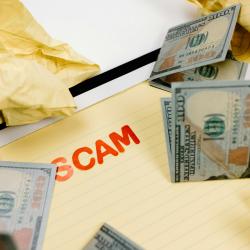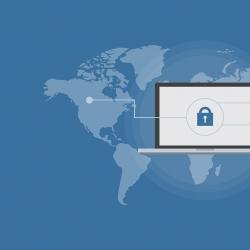How to Recognize and Avoid Phishing Scams
The internet has become a vital aspect of our daily lives, providing endless opportunities for communication, learning, and commerce. However, this increased connectivity also brings with it a plethora of cyber threats. One of the most common and insidious of these threats is phishing scams. Recognizing and avoiding these scams is crucial to safeguarding your personal and financial information.
What is Phishing?
Phishing is a fraudulent practice where attackers impersonate legitimate organizations or trustworthy entities to trick individuals into revealing sensitive information, such as usernames, passwords, credit card numbers, or social security numbers. This is often done through deceptive emails, websites, or messages that seem authentic at first glance.
Recognizing Phishing Scams
-
Unexpected Emails or Messages: If you receive an email or message from an unknown sender or a familiar service asking you to take immediate action, be suspicious. Legitimate organizations typically do not request sensitive information via email.
-
Generic Greetings: Phishing emails often use generic greetings such as "Dear Customer" instead of your actual name. This is because scammers send out mass emails to thousands of recipients.
-
Poor Grammar or Spelling: Watch out for emails laden with spelling mistakes or awkward phrasing. Professional organizations usually have standard communication protocols to avoid such errors.
-
Mismatched URLs: Hover over any link in the email (without clicking it) to see the actual URL. If the link address does not match the official website of the claimed organization, it's likely a scam.
-
Unsolicited Attachments: Be cautious of unsolicited attachments, especially those with unfamiliar extensions. They may contain malware designed to steal your data.
-
Urgency and Threats: Phishing scams often instill a sense of urgency or panic, threatening account suspension or financial loss if you do not comply immediately.
How to Avoid Phishing Scams
-
Verify the Source: If you receive a suspicious email, contact the company directly using information from its official website—not the contact information provided in the email.
-
Enable Two-Factor Authentication (2FA): Adding an extra layer of security through 2FA can protect your accounts even if your login credentials are compromised.
-
Keep Software Updated: Regular updates for your operating system, browser, and security software help protect against the latest threats.
-
Educate Yourself and Others: Awareness is the first line of defense. Stay informed about new phishing tactics and share knowledge with friends and family.
-
Use Anti-Phishing Toolbars: Many browsers support anti-phishing toolbars that cross-check the websites you visit against known phishing sites.
-
Be Skeptical: If something seems off, trust your instincts. When in doubt, verify authenticity before taking any action.
-
Use Secure Connections: Ensure that any sensitive information is only entered on websites with HTTPS, which denotes a secure connection.
What to Do If You Fall Victim
If you believe you've fallen for a phishing scam, it's important to act quickly:
- Change Passwords: Immediately change passwords for any affected accounts.
- Notify Your Bank: Inform your bank or credit card company about the breach to monitor and prevent unauthorized transactions.
- Report the Scam: Report phishing attempts to relevant authorities such as the Federal Trade Commission (FTC), Anti-Phishing Working Group (APWG), or your local cybercrime unit.
Conclusion
Phishing scams are becoming increasingly sophisticated and harder to detect, but by staying vigilant and informed, you can protect yourself from falling victim. Remember, in the digital realm, caution and knowledge are your best allies.






















